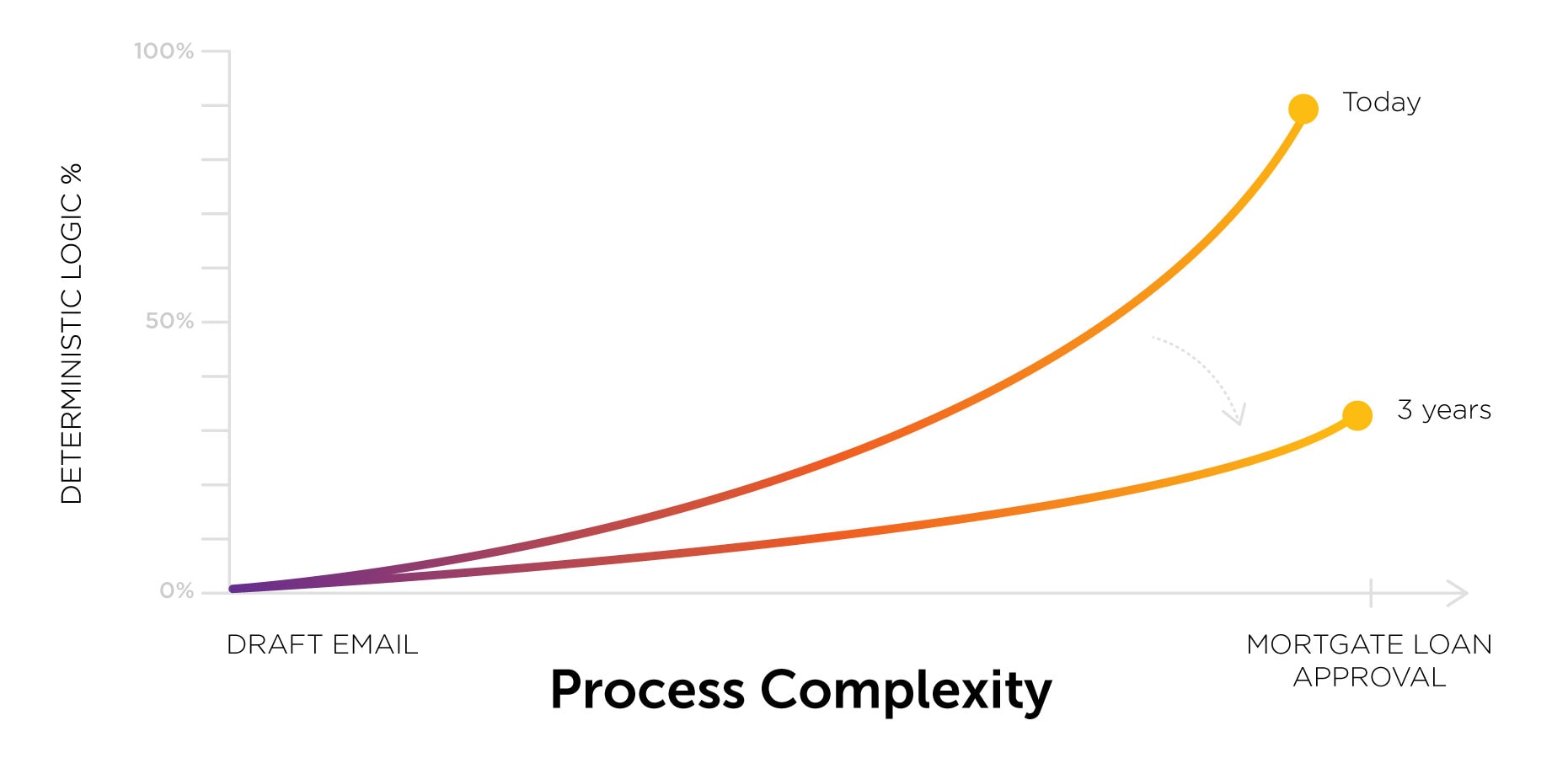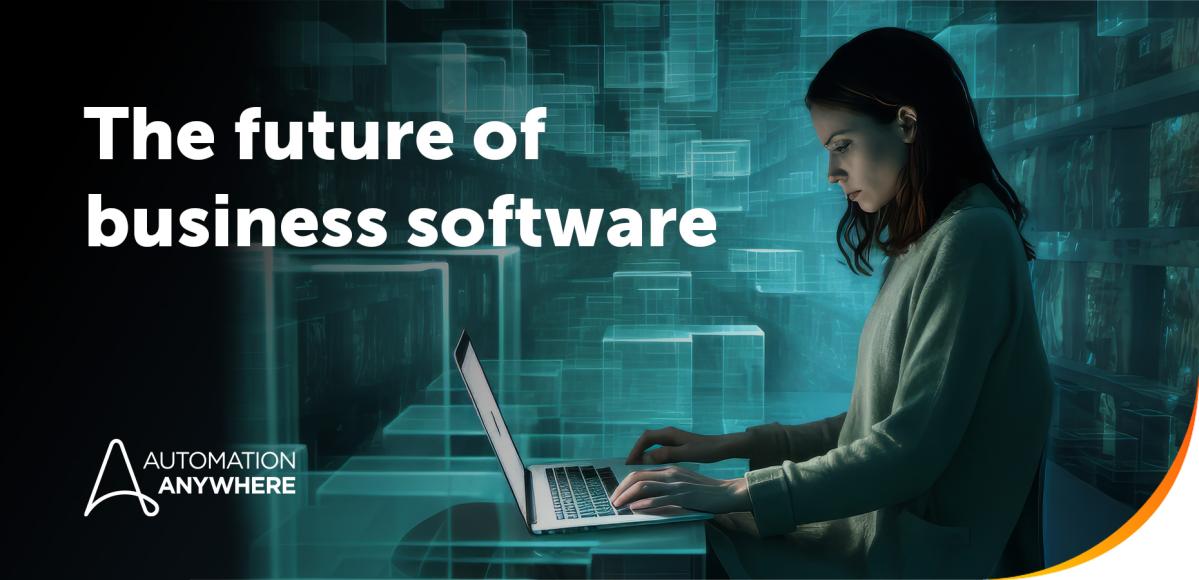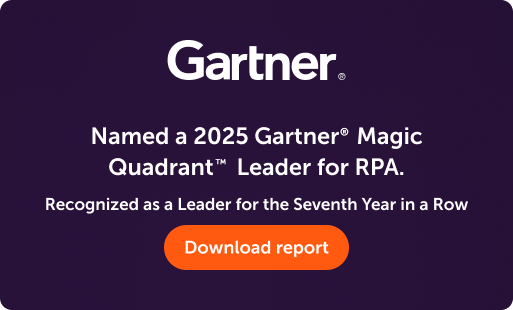- Login
- Search
- Contact Us
-
Have a question? Our team is here to help guide you on your automation journey.
-
Explore support plans designed to match your business requirements.
-
How can we help you?
-
- AI
AI Without the Hype From pilot to full deployment, our experts partner with you to ensure real, repeatable results. Get Started
- Automation Anywhere AI
-
- Solutions
Featured Agentic Solutions
Accounts Payable Invoice automation—No setup. No code. Just results. Accounts Payable
Customer Onboarding Scale KYC/AML workflows. Customer Onboarding
Customer Support Keep queues moving, even at peak load. Customer Support
Healthcare RCM Revenue cycle management that runs itself. Healthcare RCM
- Products
Platform Features
- Agentic process automation (APA)
- Robotic Process Automation (RPA)
- View all Products
-
- Resources
Get Community Edition: Start automating instantly with FREE access to full-featured automation with Cloud Community Edition.
Featured
 Named a 2025 Gartner® Magic Quadrant™ Leader for RPA.Recognized as a Leader for the Seventh Year in a Row Download report Download report
Named a 2025 Gartner® Magic Quadrant™ Leader for RPA.Recognized as a Leader for the Seventh Year in a Row Download report Download report- Become an Expert
- Developer Tools
- Get Support
- View all resources
-
- Partners
Find an Automation Anywhere Partner Explore our global network of trusted partners to support your Automation journey Find a Partner Find a Partner
- Find a Partner
- For Partners
-
Blog
AI Agents Will Eat Enterprise Software, Just Not in One Bite
The internet is rife with proclamations of the end of software as we know it. The culprit? AI, of course.
Many claim that software is already gasping for its last breath, and that a small team of AI-equipped engineers building AI agents will fully replace traditional enterprise software solutions. While directionally correct, this assertion ignores the realities of how software is used in businesses, the current state of AI for software development, and the limitations of existing AI approaches.
Eventually, AI will become the dominant component in nearly every software product, given its broad capabilities and adaptability to various scenarios. However, reaching that point requires significant advancement. Here’s why.
Where AI agents excel today
AI agents can already perform many simpler tasks independently with efficacy, and can work in tandem with humans to drive more elaborate outcomes. However, they cannot execute complex end-to-end processes reliably without the support of extensive deterministic logical scaffolding, which utilizes structured rules and workflows to guide decisions and limit AI behavior, ensuring reliability and consistency.
With the benefits of model improvements, new training methods, and more developed architectures, this will change over time. When it does, AI agents will take on a dominant role in the execution of highly complex processes.

Today, AI agents are great at assistant-type tasks related to research, for example. The AI agent acts as the primary orchestration engine, coordinating tasks across search, data retrieval, analysis, and composition to output a report (a la “deep research“). Here, we tolerate errors because the output is designed for human review and judgment before any meaningful action is taken.
AI agents can also serve as a more generalized assistant interface to complete multiple interrelated tasks in collaboration with a human, such as retrieving data from systems, analyzing the information, and executing specific actions. Here again, a human remains in the loop, guiding the process and reviewing information as the human and AI agent work collaboratively toward the ultimate goal.
In other cases, AI agents can act fully autonomously to complete a task, as long as it is narrowly defined and the actions necessary to complete it are limited. For example, an invoice intake AI agent can retrieve structured vendor information based on invoice data, validate that information, and then determine possible next steps, such as routing for payment or escalating for review.
Complexity highlights AI’s current need for deterministic logic
Due to AI’s current limitations, relying on an AI agent with too many degrees of freedom—independent decisions or steps—across a process yields unreliable outcomes. That’s why more complex applications require the aforementioned logical scaffolding to guide AI agents with narrowly defined goals and the context necessary to complete tasks correctly.
Here’s why: Without 100% accuracy, multi-task complexity drastically reduces the odds of success. Statistically, even if each step the agent takes is 98% accurate, when 20 steps are required, the overall success rate drops to less than 70%.
Many real-world enterprise AI applications are designed primarily as deterministic logic, with AI added to enhance specific areas of the application. Deterministic logic is used where you know what needs to be done, and AI agents are added where you need adaptability on well-scoped tasks. For businesses, this means combining AI agents with orchestration and automation in a single system to avoid costly errors and ensure the reliability of critical business processes.
The evolving role of AI in enterprise software
So, where are we today? For business applications, AI agents have limited capabilities. However, models are improving rapidly, and new systems are being developed to address the deficiencies of AI in completing complex tasks.
Technologies like our Process Reasoning Engine are already advancing this frontier in the domain of enterprise processes by seeding models with a broad knowledge of enterprise workflows, adding customer context from each organization, and continually learning from every agent execution. This enables customers’ AI agents to complete more complex tasks autonomously with higher reliability, even as end-to-end processes still require a large amount of deterministic orchestration to drive the overall process successfully.
A glimpse into the agentic future
The pace and extent to which AI agents will absorb the logic embedded in software are among the most compelling questions in technology today. We already see ambitious visions of an LLM-powered operating system where AI serves as the primary interface for all interactions, executed through natural language. Given the velocity of innovation and the intense industry focus, this is not a future to bet against.
In the enterprise world, it remains to be seen whether AI agents will fully evolve into complex orchestration engines within a few years. But one thing is clear: Businesses must begin laying the groundwork now for a future where AI agents play an increasingly central role. Leaders who learn to blend deterministic automation with adaptable AI agents will be best positioned to thrive as the balance between the two shifts.
Regardless of how you shift your strategies, AI will reshape the software landscape, and the journey will be anything but dull!
Explore our customer stories to see how organizations like yours are already building the foundation for their autonomous enterprise.
About Peter White

Peter White is the Chief Product Officer at Automation Anywhere.
Subscribe via Email View All Posts LinkedInGet to know the Agentic Process Automation System.

For Students & Developers
Start automating instantly with FREE access to full-featured automation with Cloud Community Edition.



